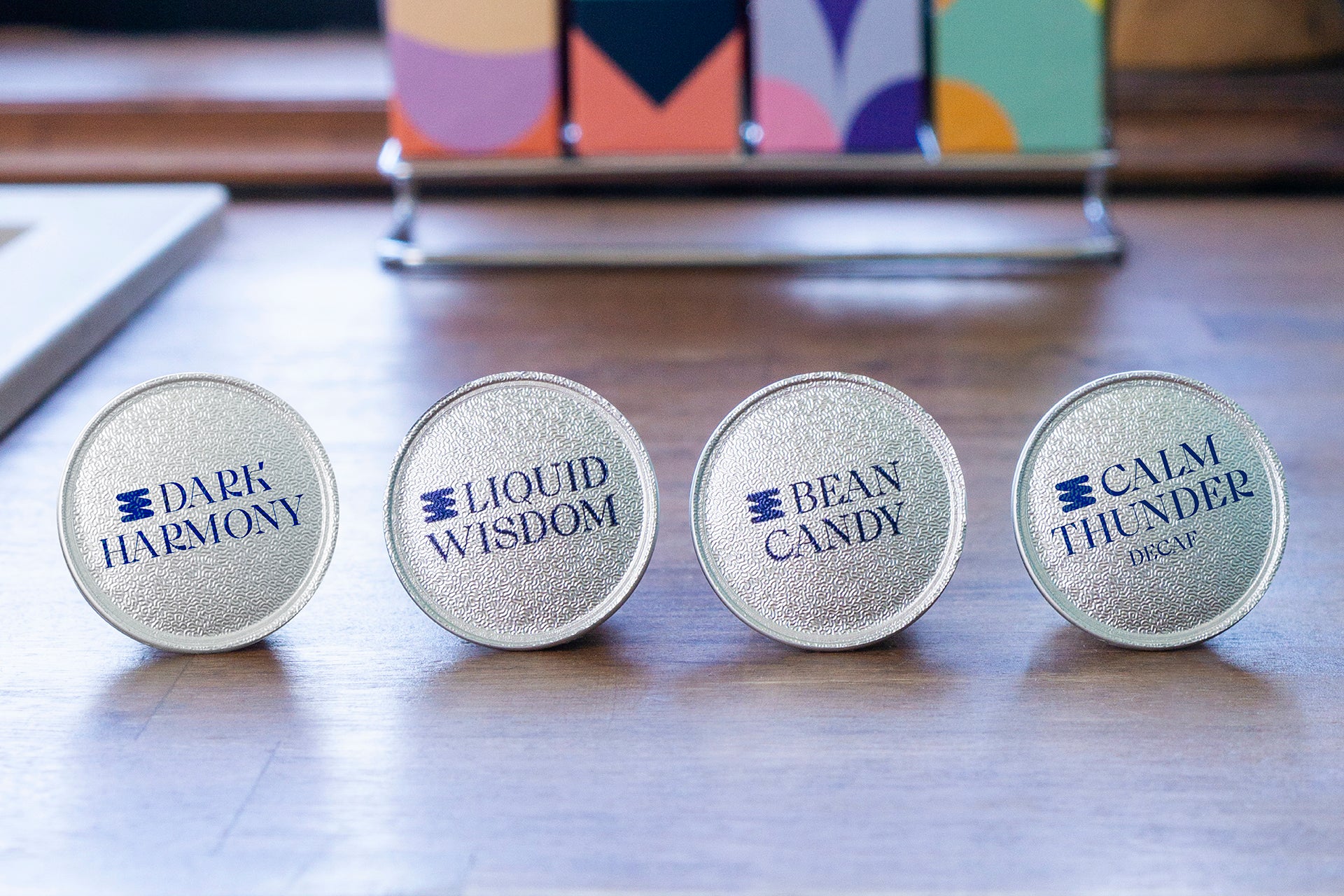Many of you ask why we use aluminum capsules (or what other options are there). We thought a lot about this, we tried several solutions, but we stuck with it. Why?
What capsules are there?
There are three major categories: plastic, aluminum and degradable. We also started with plastic at the beginning, but quickly abandoned it. The reasons are known, plastic does not decompose ("degradable" only means that it crumbles into dust and becomes microplastic contamination. That is, it does not disappear, it does not disappear without a trace), it cannot be recycled, or only with great difficulty. It is possible to collect selectively, but this only passes the problem on to someone else.
So why is it non-degradable?
There are two types of "degradable" capsules, one is industrial compostable, the other is home compostable. Their common feature is that, if properly treated, they actually decompose without a trace or environmental damage, and organic matter is formed during decomposition. However, "industrial" compost, as the name suggests, requires a serious background: pressure, temperature, continuous treatment, and unfortunately, there are currently no industrial composting plants in every settlement. (Not to mention that the capsules should also be delivered here, cleaned of all other impurities). The solution that everyone has been waiting for is the home compostable capsule, which you just have to throw under the plants, it breaks down quickly and is even good for the plants. This is just a dream at the moment, on the one hand, the capsules themselves are not the best yet (they are not completely airtight, the coffee usually stays fresh in them for 6-8 months), moreover, if the decomposition process "starts" badly, it does break down, but in the meantime a lot of methane is formed. In other words, despite our good intentions, we produced one of the most dangerous greenhouse gasses with the capsule thrown in the trash. Continuous experimentation is taking place, especially in the field of raw materials, we have already come across pine bark, sunflower husk, bamboo and paper capsules. (And then let's get to the worst news from a coffee point of view: the degradable capsules "breathe", i.e. they let air in. And the biggest enemy of coffee is oxygen. It is no coincidence that there is a very famous specialty capsule manufacturer that writes a "best before" date of 3 months on the box!)
So is aluminum the best?
From a technological point of view, it is certainly the least burdensome solution from an environmental point of view (of course, this is only true if you bring the capsules back or collect them selectively). Aluminum can be remelted an unlimited number of times and made into capsules again and again. (By the way, this is also an interesting question, that the degradable capsule is a "passenger", i.e. it is only produced to put coffee in it once, prepare it, and then it goes in the trash. The aluminum, on the other hand, goes through this cycle many times after production). In addition, the aluminum capsule is perfectly airtight, i.e. it protects the coffee inside.
So how polluting is the capsule?
If the aluminum capsule is collected back, or at least disposed of in selective waste, it is one of the least polluting ways of drinking coffee at home. We have already written a longer thesis about this, read it:
Are coffee capsules environmentally friendly?
What's more, if you buy a Samurai Shoelace capsule, you can "not only" drink very delicious coffee at home or in the office, but that coffee comes from a controlled source (selected growing area, from well-known farms), roasted and encapsulated by us, so you also strengthen local businesses!
Not to mention that we offer a great tool for recycling our capsules (click on the picture!)

